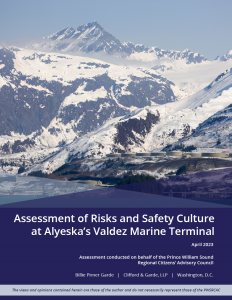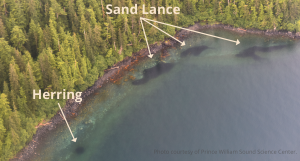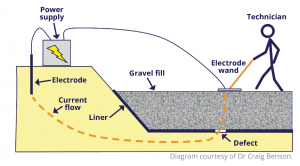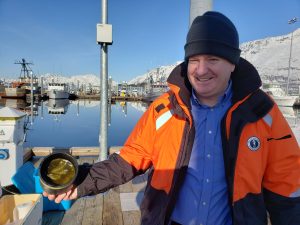
2023 report: “Assessment of Risks and Safety Culture at Alyeska’s Valdez Marine Terminal”
Prepared by Ms. Billie Pirner Garde, contractor to the Prince William Sound Regional Citizens’ Advisory Council.
This report was initiated in June 2022, in response to safety concerns at the Valdez Marine Terminal (VMT) brought to PWSRCAC by current and former Alyeska employees.
- View full report: “Assessment of Risks and Safety Culture at Alyeska’s Valdez Marine Terminal” (PDF 4.1 MB)*
- Transmittal letter to the Alaska Congressional Delegation (PDF 0.4 MB)
Key finding from the report
The purpose of the assessment documented in the report was to reach a determination, based on the information provided to PWSRCAC, on whether there is a current level of unacceptable safety risk to the VMT, its workforce, the community of Valdez, and the environment. After reviewing all information available through the assessment, it is Ms. Garde’s conclusion that there currently is an unacceptable safety risk to the VMT, and consequently no reasonable assurance that the VMT is operating safely and in compliance with its regulatory requirements.
Inadequate resources (e.g., staffing, equipment, adequate safety and reporting systems) and budget pressures are a common theme in all the issues addressed throughout the report. There is no substantive information in this report regarding safety or process safety issues that is not already available to Alyeska. The failure of the company to act on the information it has is one of the primary weaknesses identified by the assessment.
The Exxon Valdez oil spill in 1989, and Alyeska’s failure to perform effective response capability, changed the industry and Alaska forever. It should have permanently changed Alyeska’s respect for the dangers inherent in its operations as well. Unfortunately, the current situation reveals that due to changes in the organization, availability of resources, quality and audit functions, maintenance and system upgrades, and operational integrity and compliance have suffered significantly under recent corporate management. At the same time, regulatory oversight at the VMT has also diminished.
Report recommendations
Over the past several years, PWSRCAC has become increasingly concerned with budget cuts and reductions in staffing levels at agencies with key oversight responsibilities at the VMT, including the Bureau of Land Management (BLM) and the Alaska Department of Environmental Conservation. The consequences of reduced oversight have, generally, never been favorable for the Alaska public and its environment.
The PWSRCAC Board of Directors endorses all recommendations contained in Ms. Garde’s report. This includes PWSRCAC recommending that Congress initiate a Government Accountability Office (GAO) audit to determine the adequacy of the present regulatory oversight of Alyeska’s VMT operations by federal and state agencies with responsibility over the VMT, including compliance with the Federal Grant of Right-of-Way and Stipulations, and the State Lease.
In line with the recommendation for Congress, the Council is requesting that the State of Alaska initiate an assessment, or audit, of the present regulatory oversight of Alyeska’s VMT operations by state agencies with responsibilities over the VMT.
Per the report recommendations, PWSRCAC is also requesting that the federal Occupational Safety and Health Administration (OSHA) conduct or commission a full independent audit of applicable VMT systems for compliance with Process Safety Management.
The importance of the operational integrity of the VMT cannot be overstated because an incident or accident could interrupt the flow of oil from the Alaska North Slope, thus endangering U.S. energy supplies and energy security. With new oil development on the horizon, every effort must be made to ensure the integrity of systems and infrastructure within the Trans Alaska Pipeline System (TAPS).
The main recommendations include specific requests for Alyeska and the TAPS Owners to:
- Commission an independent full assessment of the Alyeska safety management systems and determine a specific timeline for actual completion of the necessary changes to ensure safe operations;
- Commission an immediate independent audit to be conducted of all deferred maintenance at the VMT; and
- Provide mandatory training for all supervisory and management personnel on their responsibilities to manage in a manner that promotes a strong safety culture, upholds a compliance culture, and does not tolerate harassment, intimidation, retaliation, or discrimination.
These recommendations and requests include more details, which can be found in the Recommendations section of the report. The Council acknowledges that there are recommendations directed internally to PWSRCAC and we will be considering appropriate actions in an effort to address these.
Next steps
The issues and recommendations covered by this assessment and report will take some time to address, possibly years. The Board and staff will now be following up with Alyeska, the Delegation, Governor, Legislature, and regulatory agencies to collect any input and thoughts on the path forward. Discussions need to take place with all parties, once they have had an opportunity to review the information contained in the report, to hopefully outline a process to ensure these matters are addressed in a timely manner.
Conclusions
OPA 90 mandates for the Council include developing long-term partnerships with government and industry, while also directing it to take steps to eliminate the previous complacency of those groups that led up to the 1989 Exxon Valdez oil spill. This is a challenging mission to achieve. It can be difficult to maintain productive relationships with those to whom you must also provide critical feedback, especially during times of serious reductions in staffing and budgets for those entities. While PWSRCAC recognizes this report could generate tension with Alyeska and some of the state and federal regulatory agencies with oversight responsibilities at the VMT, we hope to work with all parties to address these issues in a manner that will lead to a constructive and productive path forward.
Alyeska, state and federal regulators, and the Council all do their best to work with all parties in a highly professional manner, seeking results that will help prevent further oil spills or accidents. This mature, collegial, and cooperative approach has helped protect Alaska from another Exxon Valdez-type of oil spill or other devastating accident over the past three plus decades. But, as the report findings indicate, it takes constant vigilance, training, and monitoring to help ensure that Alaska will be spared another major oil spill.
We know that Alyeska and the associated regulatory agencies have dedicated staff working daily on the Trans Alaska Pipeline System, doing their best to ensure it is operated as safely as possible with the resources they are given. We also recognize that Alyeska and the associated regulatory agencies all have full plates in fulfilling their missions which benefit our nation in terms of safe transport and storage of Alaska North Slope crude oil. And, considering the events taking place in global affairs, the importance of those missions continues to grow.
PWSRCAC recognizes that while zero defects in such missions is the clear intended goal, we also acknowledge there will be times when issues, problems, and deficiencies arise that must be dealt with and resolved once identified. The view of the PWSRCAC, as authorized by Congress, is that the work of this Council should be carried out in a collegial, cooperative, and constructive manner to be of substantial assistance to the mission of Alyeska, and the associated state and federal regulatory agencies, in transport and storage of oil safely through the VMT and associated tankers.
PWSRCAC sincerely appreciates the spirit of cooperation present at its March meeting with Alyeska and hopes to continue to support their work to address the issues raised in the report in the long term. The Council’s Board of Directors and staff agree with the sentiment expressed by Alyeska executives after their receipt of the draft report, that this report provides an opportunity to make Alyeska better by looking into these issues, addressing problems, and making sure employees are heard. It is the Council’s hope that Alaska Congressional Delegation, Governor, Legislature, and regulatory agencies with oversight of the VMT also view the findings and recommendations in the report as an opportunity for improvements to the system.
The Council stands ready to support Alyeska, and state and federal regulatory agencies, in our role as an advisor. We believe firmly that the greatest successes result from citizens, industry, and regulators working together to maintain and improve safeguards designed to prevent and prepare for future oil spills.
Full report:
Assessment of Risks and Safety Culture at Alyeska’s Valdez Marine Terminal (4.1 MB)
Transmittal letters:
Transmittal letter to the Alaska Congressional Delegation (0.4 MB)
Transmittal letter to Alaska Senate President and Speaker Of The House (0.3 MB)
Transmittal letter to Alyeska Pipeline Service Company (0.3 MB)
Transmittal letter to Governor Dunleavy (0.3 MB)
Transmittal letter to Joint Pipeline Office (0.3 MB)
Transmittal letter to OSHA (0.3 MB)
* Correction: Please note the file name was corrected 4/24/2023 at 1:50 p.m. New direct link: https://www.pwsrcac.org/wp-content/uploads/filebase/programs/terminal_operations/Assessment-of-Risks-and-Safety-Culture-at-Alyeskas-Valdez-Marine-Terminal.pdf


